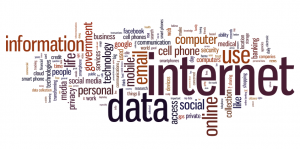The Big Data Report
 In January 2014, President Obama requested a study on big data and a working group was created. The Department of Commerce has worked closely on this project and the creation of the “Big Data: Seizing Opportunities, Preserving Values” report. Last week, I attended a very interesting meeting to discuss the report. I found myself thinking about how this connected to local government and consumer issues I had pondered in the past.
In January 2014, President Obama requested a study on big data and a working group was created. The Department of Commerce has worked closely on this project and the creation of the “Big Data: Seizing Opportunities, Preserving Values” report. Last week, I attended a very interesting meeting to discuss the report. I found myself thinking about how this connected to local government and consumer issues I had pondered in the past.
I highly recommend you take a look at the report, which can be found here. Big data is one of those really frustrating concepts that has multiple definitions depending on who you’re talking to, but the report does a good job of nailing down a general description of the concept with the three V’s: Velocity, Volume, and Variety. Big data is data that is “so large in volume, so diverse in variety, or moving with such velocity, that traditional modes of data capture and analysis are insufficient.” Basically, a data explosion. And the sources of data are vast; public records, surveys, social media, GPS, cell phone towers- data is being gathered everywhere, all the time. Often, the biggest question consumers concerned about big data have is “What is it being used for?” And the White House report aims to provide some examples of this, as well as describe ways the public and private sector can use big data in beneficial ways, while minimizing risk. This article provides some good summary takeaways.
There are many positive ways, some of which you may be aware, that data is used to make our lives better. From fraud prevention systems to hospital data used for healthcare improvements, professionals have had more and more access to information, making them better at their jobs. There are lifesaving uses such as the Center for Disease Control (CDC) using big data to map the spread of infectious diseases and learn more about prevention, to more trivial benefits like those helpful suggestions when you are shopping for new shoes online. At a local level, data can be used to make citizens’ lives easier and make governments run more efficiently. I remember learning about some of these neat possibilities with fellow classmates at Triangle Open Data Day in Raleigh, N.C. GPS tracking for potholes, trash pick-up resource guides, and crime tracking/reporting applications- these are neat solutions for local government made possible through the big data explosion!
Of course, there are also risks to having that much information floating around. One that probably pops into most of our minds is increased fraud. Another addressed in the report is the use of personalized profiles created through online data. Claims of race-based advertisements resulting from big data profiles is one example of “a potentially harmful” use. The report delves deeper into this issue, as well as the drawbacks of things like “filter bubbles.” This term refers to online search results being filtered based on data profiles, which can preclude information that challenges individual assumptions or beliefs. I can understand how personalized results could limit information and be a big problem. It’s hard to anticipate all the implications of big data. I’m glad the administration has started to look ahead, but I expect there’s much more work to be done.


